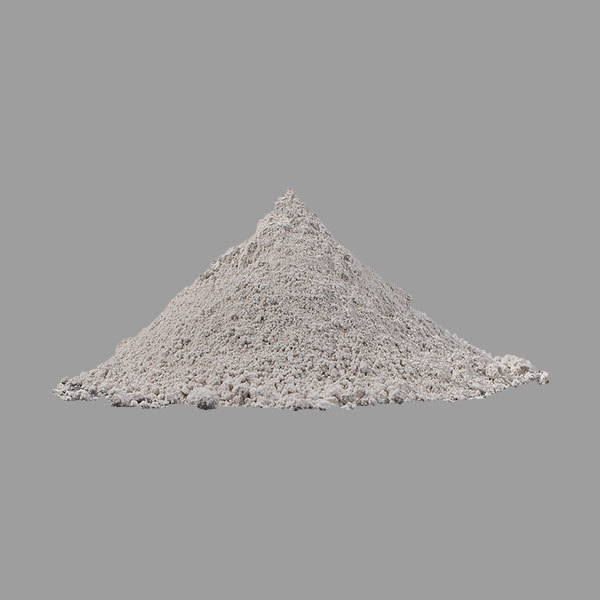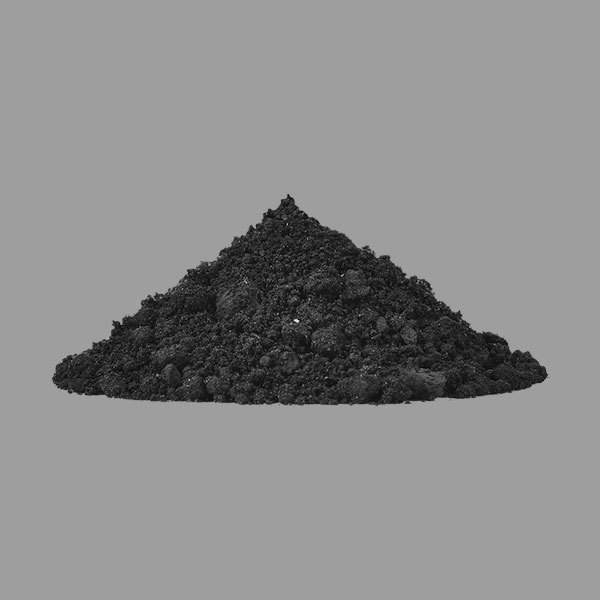


Kaolin Clay
PRODUCT DETAILS
| Code | Whiteness(1200℃) | Strength | SiO2 | Al2O3 | Fe2O3 | CaO | MgO | TiO2 | K2O | Na2O | L.O.I. |
| FG-K60 | 80 | 4.5 | 53.34 | 31.49 | 0.8 | 0.2 | 0.23 | 0.13 | 1.82 | 0.26 | 11.73 |
| FG-K70 | 85 | 4.5 | 55.19 | 31.91 | 0.48 | 0.23 | 0.12 | 0.06 | 1.58 | 0.2 | 10.23 |
| FG-K75A | 89 | 5.1 | 50.44 | 34.44 | 0.25 | 0.04 | 0.18 | 0.08 | 1.10 | 0.45 | 12.59 |
| FG-K85 | 89 | 3.85 | 46.78 | 37.98 | 0.49 | 0.09 | 0.03 | 0.39 | 0.11 | 0.05 | 14.07 |
| FG-K90 | 91 | 3.5 | 48.56 | 36.65 | 0.37 | 0.01 | 0.07 | 0.10 | 0.74 | 0.02 | 13.33 |
Description:
Introducing Calcined Kaolin Powder Clay, a magnificent white non-plastic substance. This remarkable material is raw kaolin that has undergone a process of firing in a rotary calcining kiln to expel approximately 12% of its crystal water. Calcined Kaolin Powder Clay exemplifies the art of transforming a mineral's characteristics while preserving its chemical composition, thereby enhancing its performance.
In the realm of traditional ceramics, the true potential of Calcined Kaolin Powder Clay is often overlooked. Its intrinsic value remains hidden from our grasp. Kaolin, a pure clay mineral, boasts a fired chemistry comprising one part Al2O3 and two parts SiO2.
The raw crystals of Kaolin clay are naturally hydrated, containing 12% crystal-bound water. This unique attribute grants it plasticity, making it an essential component in the vast majority of glazes. Not only does Kaolin provide the much-needed Al2O3 for glaze chemistry, but it also readily decomposes in the kiln's intense heat. As an alternative, feldspars can also supply Al2O3, but they often come bundled with excessive KNaO, which may not be ideal.
Raw Kaolin not only imparts viscosity to glaze slurries but also reinforces the dry glaze layer. Nevertheless, when the raw Kaolin content surpasses 20% in a recipe, shrinkage can become problematic, leading to crawling issues.
To tackle this challenge, substituting a portion of the raw Kaolin with calcined material provides a solution, maintaining the glaze's chemistry while reducing shrinkage and preventing cracking.
This ingenious substitution allows for precise control over the physical properties of the glaze slurry without compromising the chemistry of the final fired product. Of course, when blending raw and calcined materials, it's important to account for the loss on ignition (LOI) of the raw material (subtracting 12% from the calcined amount required).
Kaolin porcelain application
Ceramic craftsmanship is a large area of kaolin and a large amount of use. The general usage is 20% to 30% of the secret recipe. The effect of kaolin in porcelain is to introduce Al2O3, which is beneficial to the transformation of fused zirconia alumina to improve its organic chemical reliability and sintering pressure resistance.
They converted the dissolution of the medium kaolin into a rafting jade, which can generate a key architecture of the blank body's pressure resistance. It can avoid the deformation of the product, make the firing temperature larger, and make the body have a certain whiteness. At the same time, kaolin has certain plasticity, adhesion, floating, and fusion capabilities. They awarded the excellent molding of porcelain mud and glazed, which makes porcelain mud beneficial to the car blank and grouting, which is conducive to molding. Kaolin can be used in cables, which can improve insulation performance and reduce dielectric loss.
Copper, chromium, manganese, and other chromatin, which reduce the whiteness after burning, causing pigmentation.
The granularity distribution regulations of kaolin are generally dense and higher so porcelain mud has excellent plasticity and stress-resistant strength. For the cast processing process of rapid casting, accelerating grouting rate, and drying rate, the particle size distribution of the seasoning needs to be improved. In addition, the difference between the level of the high -gallstone crystal level in the kaolin, will also significantly endanger the use of porcelain blanks. If the level of the kaolin stone is good, the plasticity and fusion ability are low, the dryness is small, the sintering temperature is high, and its residual composition is also reduced. If the level of the cabinet of kaolin is low, the plasticity is high, the dryness is large, the sintering temperature is low, and the relatively high residual composition should be higher.
Kaolin Tuchi Craft Features:
Blaid brightness and whiteness are some of the main parameters of kaolin's craftsmanship. The high-purity kaolin is white. The whiteness of Kaolin is divided into natural whiteness and whiteness after burning.
For ceramic ingredients, the whiteness after burning is more important. The higher the whiteness of the burn, the better the quality. The ceramic process stipulates that drying at 105 ° C is the grading standard of natural whiteness, and burning at 1300 ° C is the grading standard of burning whiteness.
A white tester can measure the whiteness of the kaolin. The whiteness meter is a device that measures the reflectivity of the 3800-7000å (that is, Egypt, 1 Emm = 0.1 nanometer). In the white degree meter, the reflectance of samples to be tested with standard samples (such as BASO4, MGO, etc.) is compared, that is, the whiteness value (such as the whiteness 90 means 90% of the standard sample reflectance).
The brightness of kaolin is similar to whiteness, which is equivalent to the whiteness under the 4570å (Ernar) wavelength light.
It mainly related the color of kaolin to the metal oxides or organic matter it contains. Generally, it contains FE2O3 with rose red and brownish yellow. It contains light blue and light green. It contains mno2 light brown. Organic matter is pale yellow, gray, green, black, and other colors. The existence of these impurities reduces the natural whiteness of kaolin. Among them, iron and titanium minerals will also affect the whiteness of burning, causing porcelain to appear porcelain or melting scars.
The granularity distribution of kaolin: particle size distribution refers to particles in natural kaolin, the proportion of the given continuous different particle grades (represented by the mesh of millimeters or micron sieve holes) (represented by the mesh) range (represented by percentage content). The particle size distribution characteristics of kaolin are of great significance for the options and process applications of ore. The size of the particles has a great impact on their plasticity, mud viscosity, ion exchange, molding performance, dryness performance, and firing performance.
kaolin deposits need to be processed by technical processing. Whether it is easy to process to the process required by the process has become one of the standards for evaluating the quality of ore. Each industrial department has specific granularity and fineness requirements for Kaolin for different purposes. For example, the United States requires 90-95 % of the kaolin for coatings that are less than 2 μm, and 78-80%of paper fillers are less than 2 μm.




